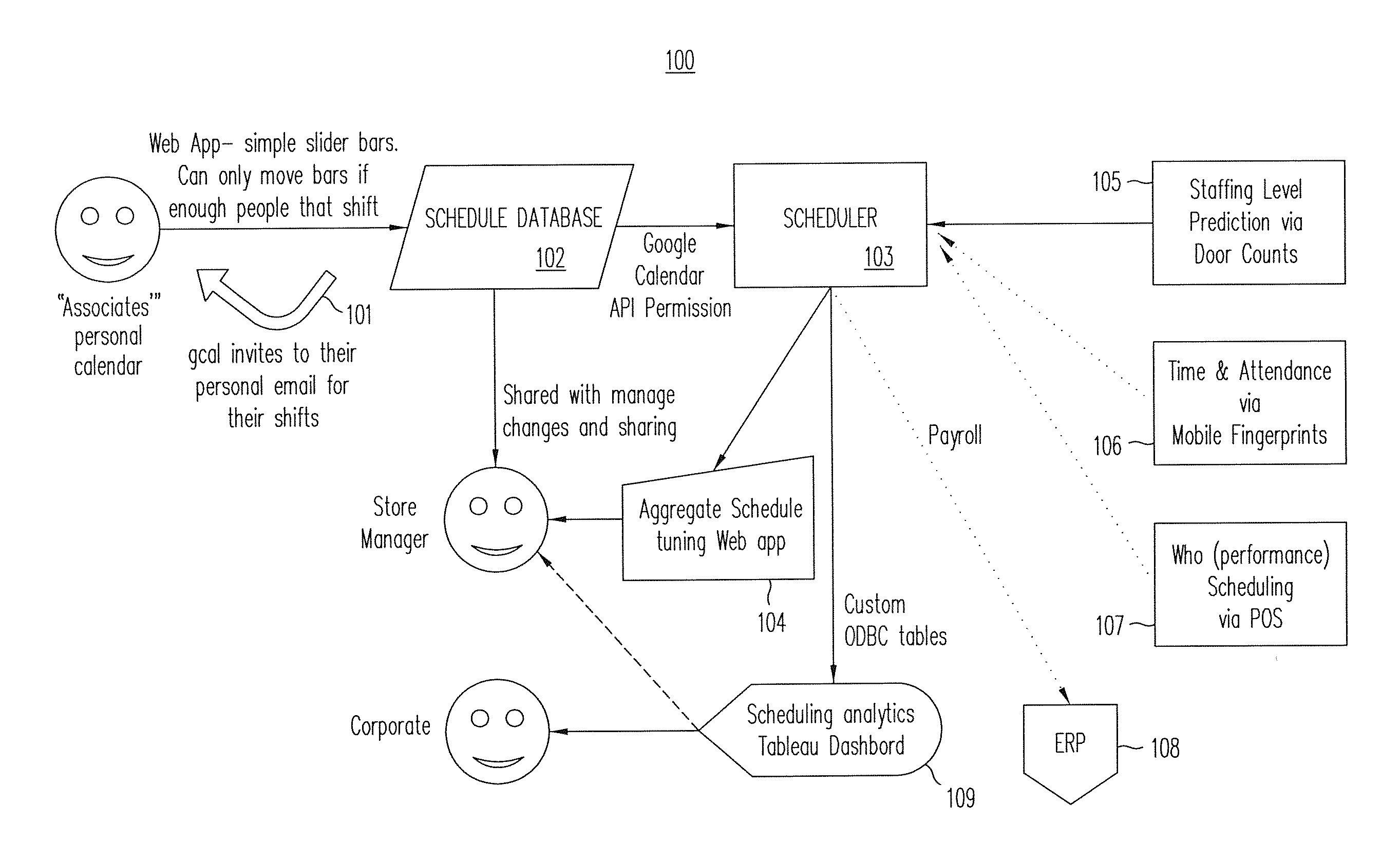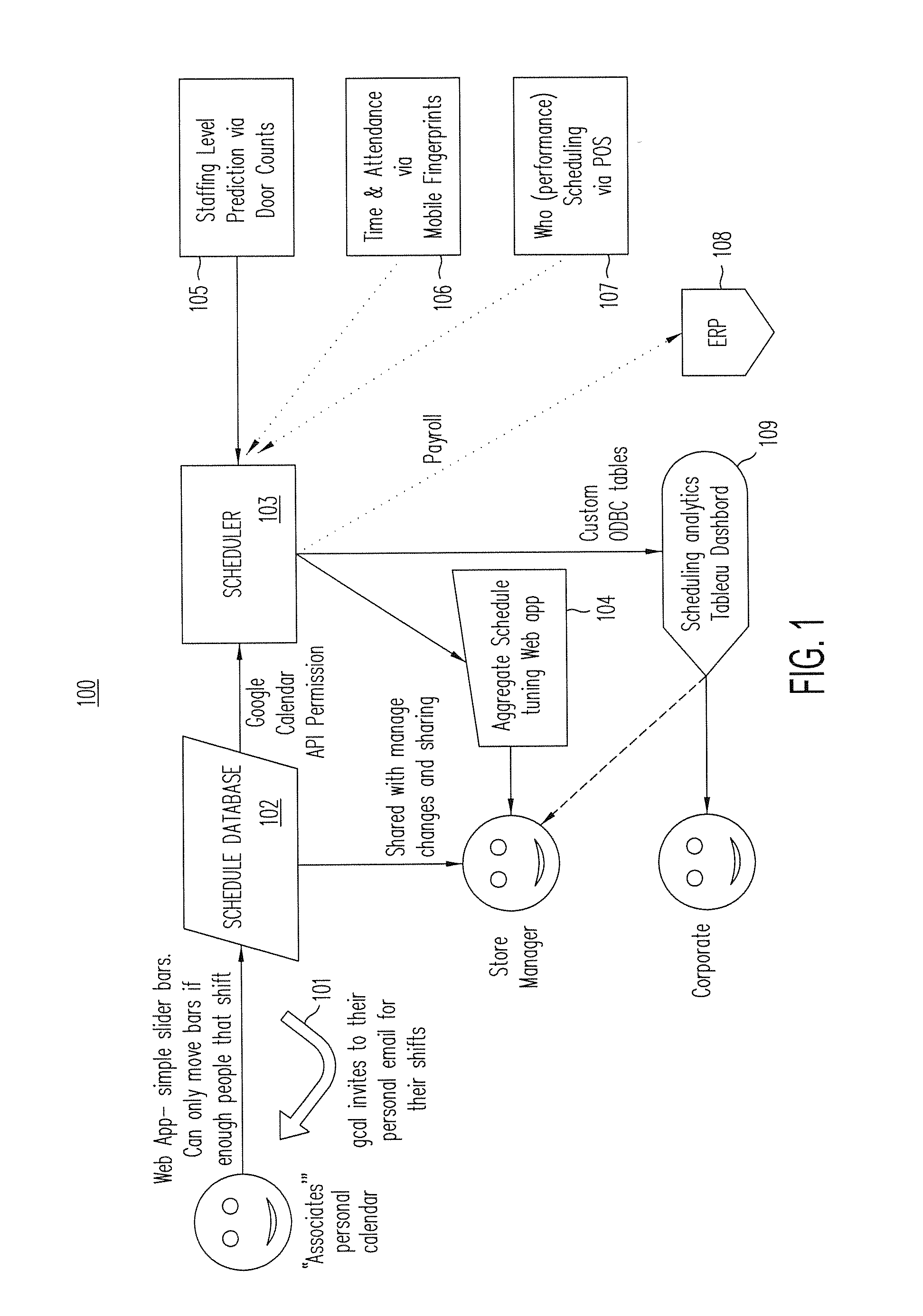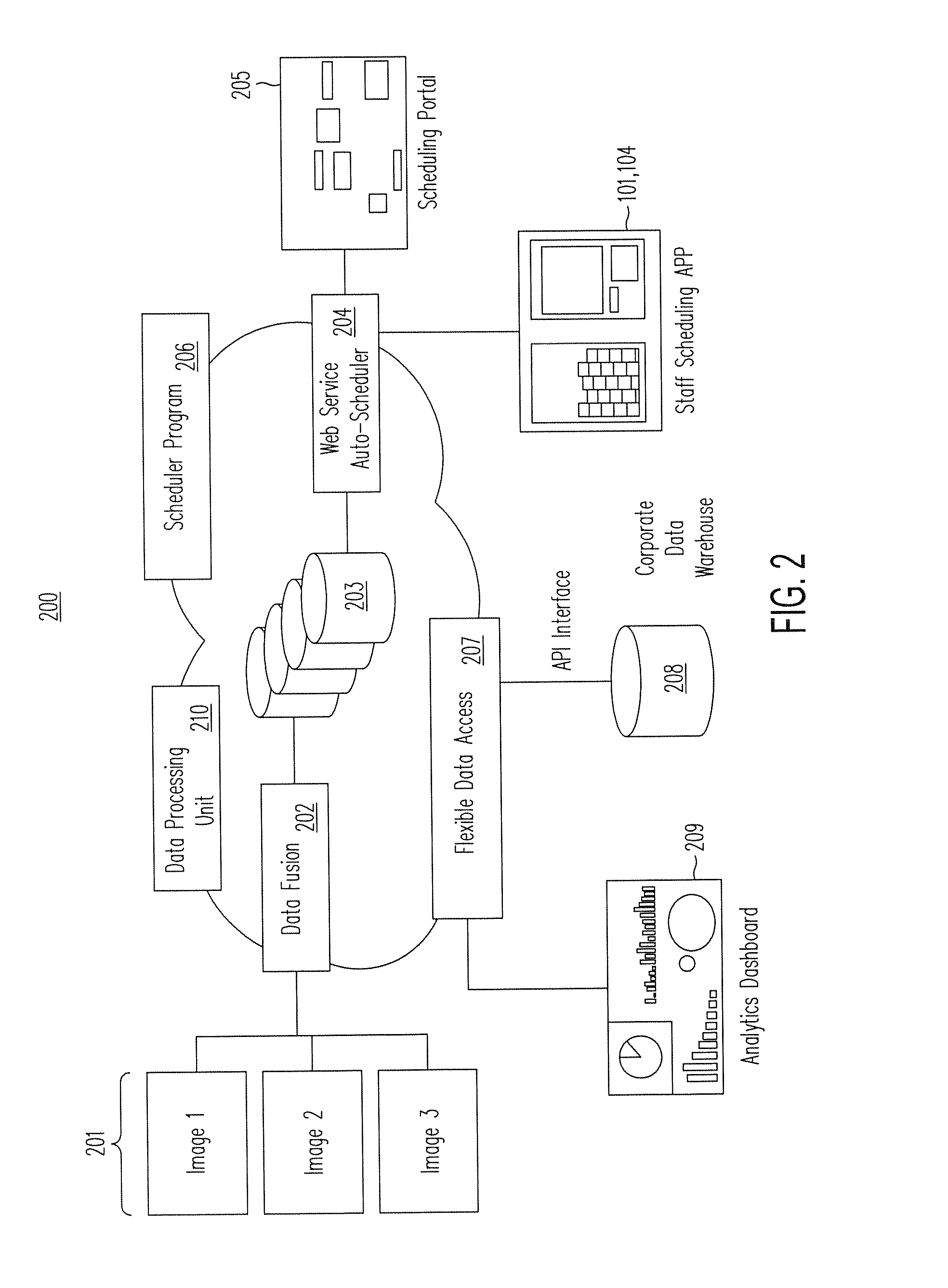Method for determining staffing needs based in part on sensor inputs
a technology of sensor input and staffing needs, applied in the field of preparation of work schedules, can solve the problems of no longer representing the true availability of employees, work schedules that require extensive manual adjustment or correction, and time-consuming manual processes, so as to achieve efficient staff scheduling and save costs. , the effect of increasing sales
- Summary
- Abstract
- Description
- Claims
- Application Information
AI Technical Summary
Benefits of technology
Problems solved by technology
Method used
Image
Examples
Embodiment Construction
[0025]The present invention provides a tool for an employee to update his or her availability accurately and frequently, in order to reflect the employee's true availability. The present invention also provides an accurate model of customer traffic based in part on sensors placed throughout the retail establishment. The true employee availability and the accurate model of customer traffic allow the system to generate an optimized work schedule automatically. The optimized work schedule may be generated under a machine-learning approach so that the need for manual correction or adjustment is eliminated or reduced over time, as experience accrues. As a result, the present invention benefits the retail establishment by a higher sales conversion rate, leading to higher revenue and profits.
[0026]FIG. 1 is a functional block diagram of scheduling product 100, in accordance with one embodiment of the present invention. As shown in FIG. 1, application program (“app”) 101 interacts with each...
PUM
 Login to View More
Login to View More Abstract
Description
Claims
Application Information
 Login to View More
Login to View More - R&D
- Intellectual Property
- Life Sciences
- Materials
- Tech Scout
- Unparalleled Data Quality
- Higher Quality Content
- 60% Fewer Hallucinations
Browse by: Latest US Patents, China's latest patents, Technical Efficacy Thesaurus, Application Domain, Technology Topic, Popular Technical Reports.
© 2025 PatSnap. All rights reserved.Legal|Privacy policy|Modern Slavery Act Transparency Statement|Sitemap|About US| Contact US: help@patsnap.com



